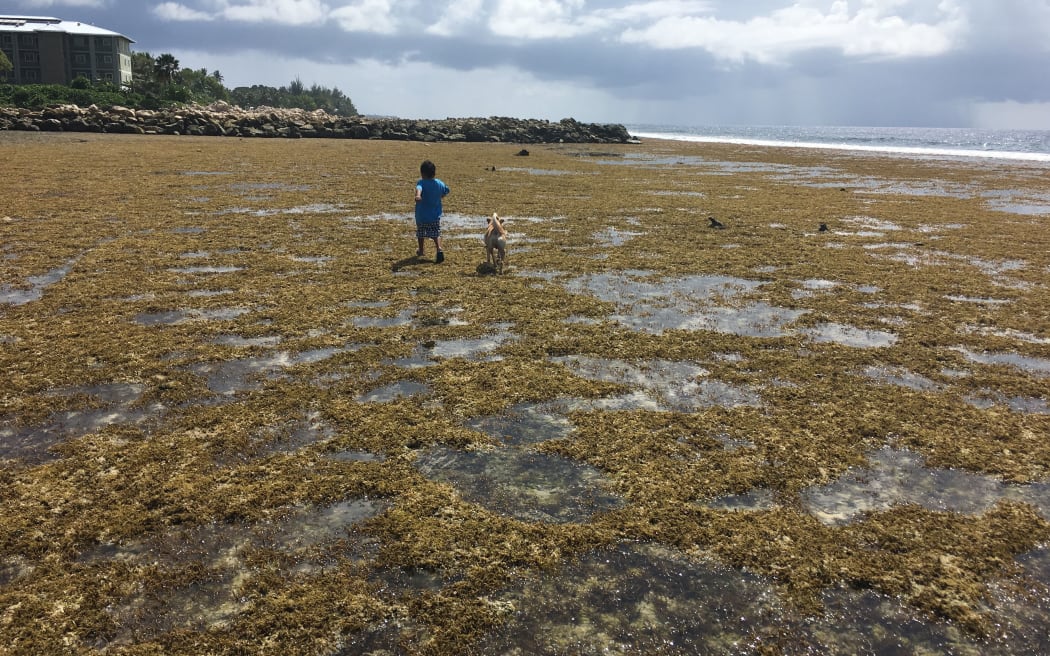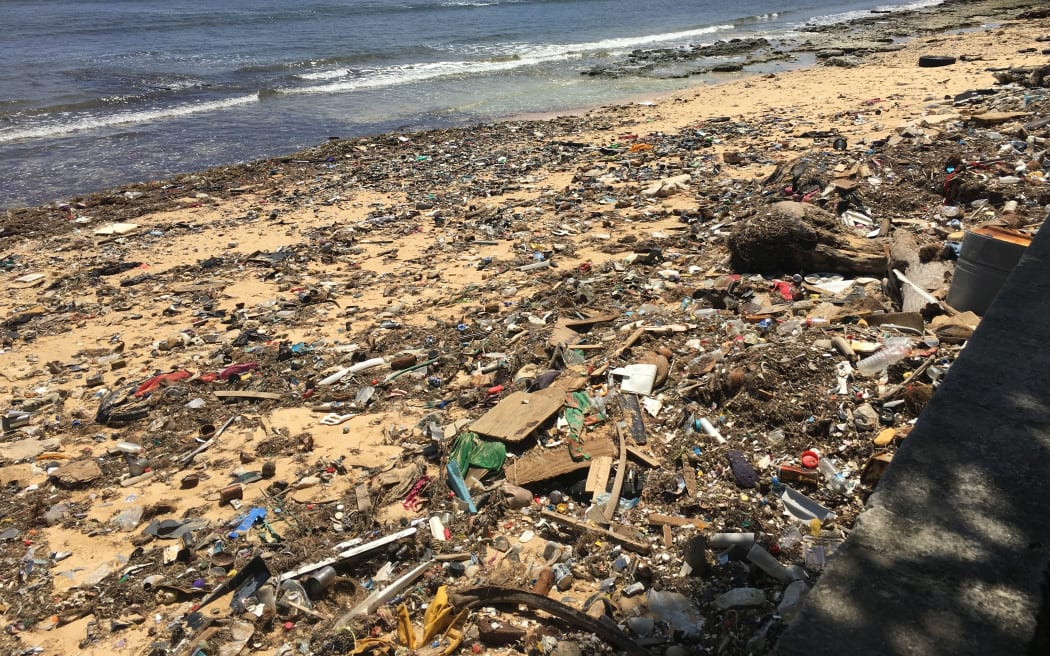
Brown algae blankets ocean side reefs, several miles downcurrent from the raw sewage outfall pipe in downtown Majuro Photo: RNZI / Giff Johnson
Nine of 10 locations tested in the atoll of Majuro in the Marshall Islands failed water quality standards because of contamination by bacteria associated with human and animal waste.
Half of the samples taken from the city fresh water piping system were also contaminated with total coliform and E coli, according to reports by
the Environmental Protection Authority.
Most of the sites are adjacent to schools and settlements, with only only one area showing water safe for swimming and fishing.
To be considered safe, water must have less than 104 MPN per 100 milliliter of enterococci contamination.
One site tested as high as 4,100 MPN.
Nine sites in total showed significantly high contamination.
Enterococci causes a variety of infections and is also resistant to many types drugs and antibiotics.
The EPA has issued warnings with swimming and fishing taking place in most of the locations.
The pollution is caused by untreated sewage outflow, pig pens located near the sea and the use of beaches as toilets or rubbish dumps.
The capital's sewage waste is pumped untreated onto a reef with the current spreading it into the ocean that washes ashore along the atoll.

Garbage mingled with brown algae is strewn along ocean side beaches in Majuro, the capital of the Marshall Islands. Photo: RNZI / Giff Johnson
An ongoing massive bloom of brown algae, is believed to be the result of the continuous flow of untreated sewage onto the reef.
Brown algae blankets the reef in many areas of the capital and is most concentrated on the ocean side reef around the sewage outfall.
Majuro's sewage outfall pipe, once about 200 feet long that stretched beyond the reef, has been broken and deteriorating for many years.
The U.S. government is presently funding studies to determine the best way to improve the outfall situation.
The city water company has now posted signs around the sewage outfall pipe warning residents not to swim and fish.

